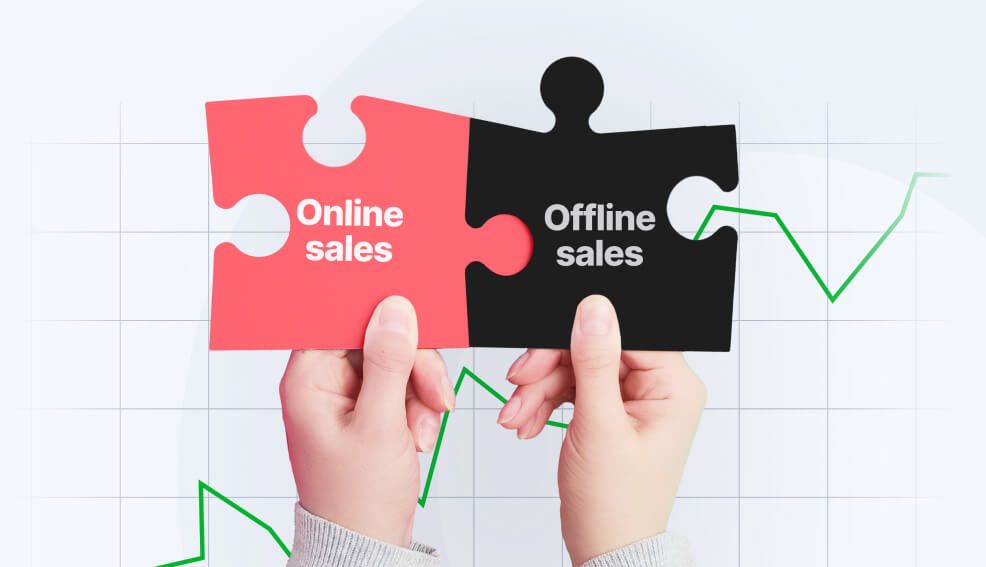
In today’s omnichannel retail environment, integrating your online and offline sales channels is essential for providing a seamless customer experience. By harmonizing these two channels, businesses can enhance customer satisfaction, increase sales, and create a more cohesive brand presence. This guide will delve into practical strategies to effectively integrate your online and offline sales channels.
1. Assess Your Current Situation
Before you begin integrating your sales channels, it’s crucial to assess your current situation. Evaluate the performance of your existing channels, identify gaps, and understand the challenges you face. This assessment will provide a clear starting point and help you set realistic goals for integration.
2. Know Your Customers
Understanding your customers is fundamental to successful integration. Gather data on customer preferences, shopping habits, and behaviors across both online and offline channels. This insight will allow you to tailor your integration strategy to meet customer needs and expectations effectively.
3. Online Campaigns Geared Towards Offline Retail
Use your online presence to drive traffic to your physical stores. Online campaigns, such as email marketing, social media promotions, and digital ads, can highlight in-store events, exclusive offers, or new product launches. Encouraging customers to visit your store can create a more engaging shopping experience.
4. Implement a Unified Inventory Management System
A unified inventory management system ensures that inventory data is synchronized across all sales platforms, preventing issues like over-selling or stockouts. When customers can see real-time inventory levels online and in-store, it enhances their shopping experience. Furthermore, employees can quickly locate products, improving operational efficiency.
5. Offer Click-and-Collect Services
Click-and-collect (or buy online, pick up in-store) services bridge the gap between online and offline channels. This option appeals to customers who prefer the convenience of online shopping but want to avoid shipping fees or wait times. To implement click-and-collect effectively, ensure your website clearly indicates product availability and your staff is trained to handle these orders swiftly.
6. Utilize Omnichannel Marketing Strategies
Omnichannel marketing strategies help in creating a consistent brand experience across all channels. For instance, a customer who receives a promotional email should find the same offer available on your website and in-store. Use data analytics to track customer interactions across various channels and tailor your marketing messages accordingly. Personalized marketing, based on customers’ past behavior, can significantly increase engagement and conversion rates.
7. Integrate Your Data
Integrating data from online and offline channels provides a holistic view of your business. Use customer relationship management (CRM) systems and data analytics tools to consolidate data, giving you insights into customer behavior, sales trends, and inventory levels. This integrated data helps in making informed decisions and creating targeted marketing campaigns.
8. Connect Your Channels
Ensure that your online and offline channels are connected seamlessly. This means customers should be able to start their shopping journey on one channel and complete it on another without any friction. For example, they could begin browsing products on your website and then visit your store to make the purchase, or vice versa.
9. Monitor and Optimize
Regularly monitor the performance of your integrated channels. Use analytics tools to track key metrics such as sales, customer satisfaction, and engagement rates. By continuously analyzing this data, you can identify areas for improvement and make necessary adjustments to optimize the integration.
10. Align Your Teams
Integration requires collaboration across various departments, including marketing, sales, customer service, and IT. Ensure that all teams are aligned with the integration strategy and understand their roles in achieving the overall goal. Regular communication and training sessions can help maintain this alignment.
11. Ensure Brand Consistency
Maintaining a consistent brand identity across all channels is essential for building trust and recognition. Your website, physical stores, social media profiles, and marketing materials should all reflect the same brand values, voice, and visual elements. A cohesive brand identity strengthens customer loyalty and ensures a seamless experience no matter where customers interact with your brand.
12. Optimize Your Website
Your website is a crucial component of your sales strategy. Ensure it is user-friendly, mobile-optimized, and offers features like live chat, easy navigation, and secure payment options. A well-optimized website enhances the online shopping experience and complements your offline efforts.
13. Use Social Media for Offline Events
Leverage social media platforms to promote in-store events and activities. Create buzz around product launches, sales events, or workshops happening in your physical store. This strategy not only drives foot traffic but also engages your online audience, encouraging them to connect with your brand in person.
14. Combine Online and Offline Data
Combining data from both channels provides a comprehensive view of customer behavior. Use this data to personalize marketing efforts, improve product recommendations, and enhance the overall customer experience. Integrated data helps in making strategic decisions that benefit both online and offline operations.
15. Use One Channel to Promote the Other
Cross-promote your channels to maximize their potential. For instance, use your online platform to promote in-store events and vice versa. Encourage online customers to visit your physical store by offering exclusive in-store discounts or experiences. Similarly, in-store promotions can drive traffic to your website for further engagement.
Conclusion
Integrating your online and offline sales channels is no longer a luxury but a necessity in the modern retail landscape. By assessing your current situation, understanding your customers, implementing unified systems, leveraging technology, and maintaining consistent branding, you can create a seamless and satisfying shopping experience. This integration not only enhances customer satisfaction but also drives sales and operational efficiency, setting your business up for long-term success.


